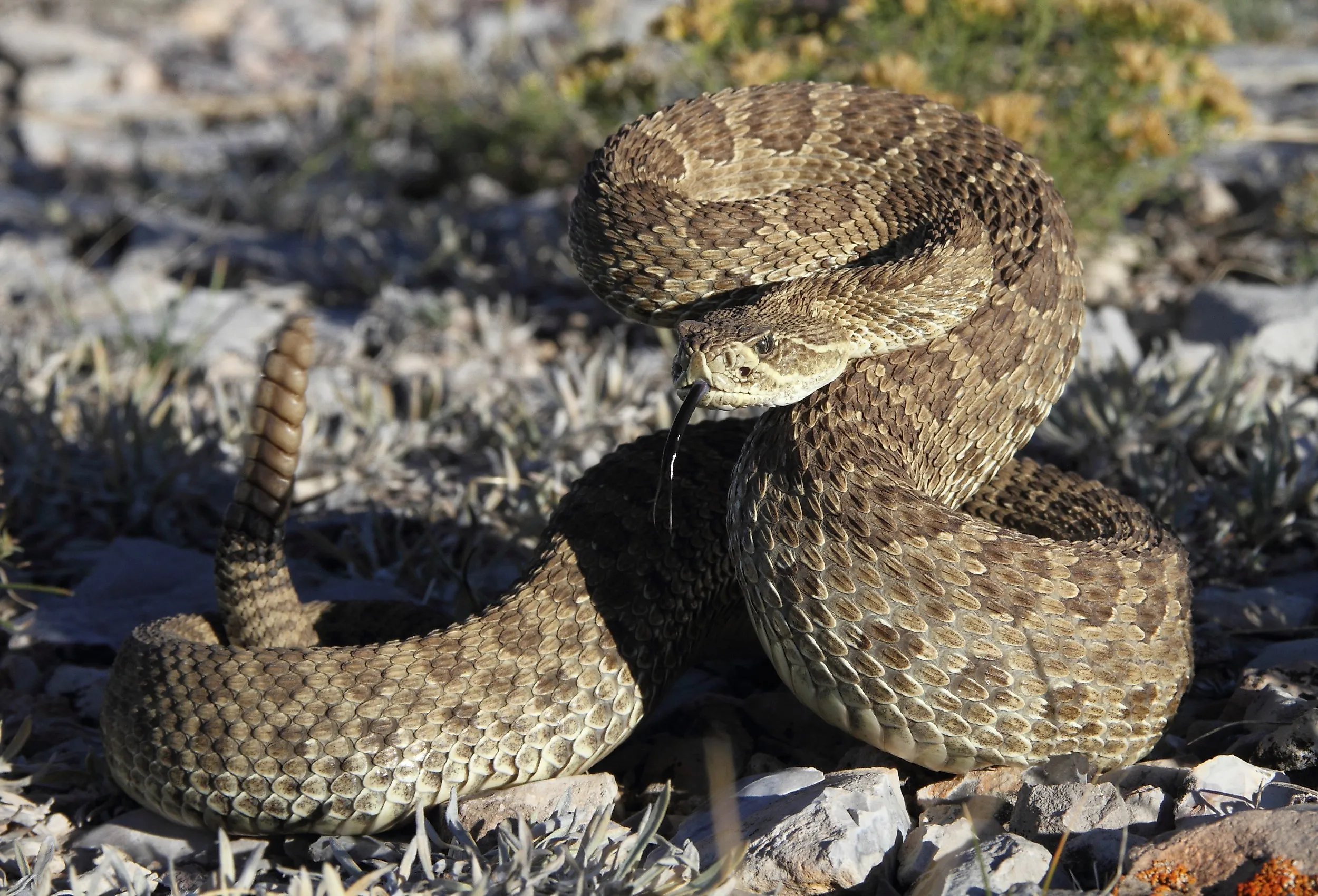
The Most Snake Infested Lakes in Wyoming
In Wyoming, there are over 4,000 lakes that offer many fun activities, from kayaking and canoeing to swimming and water sports. Each lake also provides a unique, beautiful, and picturesque view. However, as with any large body of water, they also attract various wildlife, including all kinds of snakes.
Lakes have much to offer these cold-blooded reptiles, such as a moisture-rich environment, shelter, and abundant food sources. Many of the lakes in Wyoming are home to a diverse species of snakes. Discover some of the most snake-infested lakes you might want to avoid, or at least be vigilant about local slithery friends and venomous species.
Jackson Lake
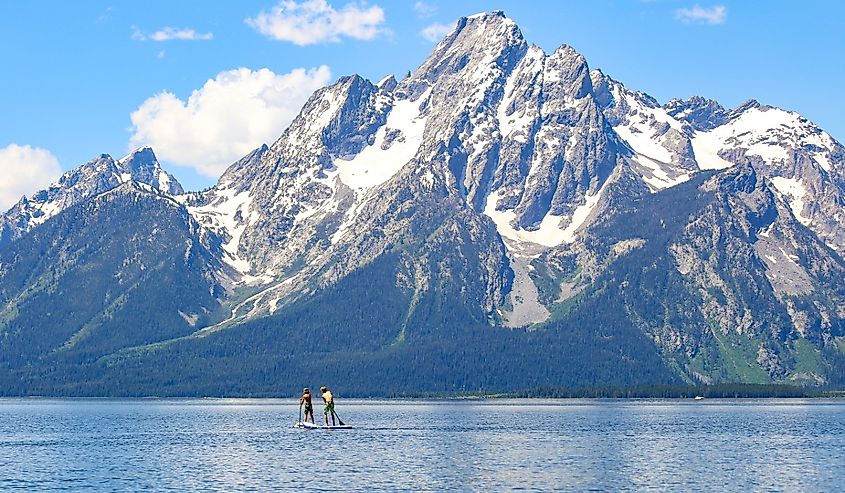
Known to be the lake with one of the highest altitudes in the United States, at 6,772 feet, Jackson Lake spans over 25,540 acres and is home to a wide range of wildlife. Surrounded by beautiful mountains, this lake offers fun activities such as camping, boating, and hiking.
You will not only find moose, black bears, and ospreys hanging around this lake but also at least three types of snakes. However, many more species have been seen around this lake, but they don’t call it home often.
The Wandering Garter Snake (Thamnophis elegans vagrans) snake is likely the most commonly found species in Jackson Lake because its food sources are predominantly amphibians, small fish, and small mammals, easily found around the lake. Another common snake species you might encounter is the Bullsnake (Pituophis catenifer sayi). This species is often mistaken for a rattlesnake but is actually a non-venomous constrictor that mainly eats birds and other small mammals.
There is also the harmless Western Racer (Coluber constrictor), which may make an appearance during your visit. Since its diet primarily consists of frogs, toads, small lizards, and even other snakes, it is always on the prowl for its next meal. Also, since it's well known for its speed and agility, the Racer may require you not to blink if you plan on trying to find one out in the wild.
Yellowstone Lake
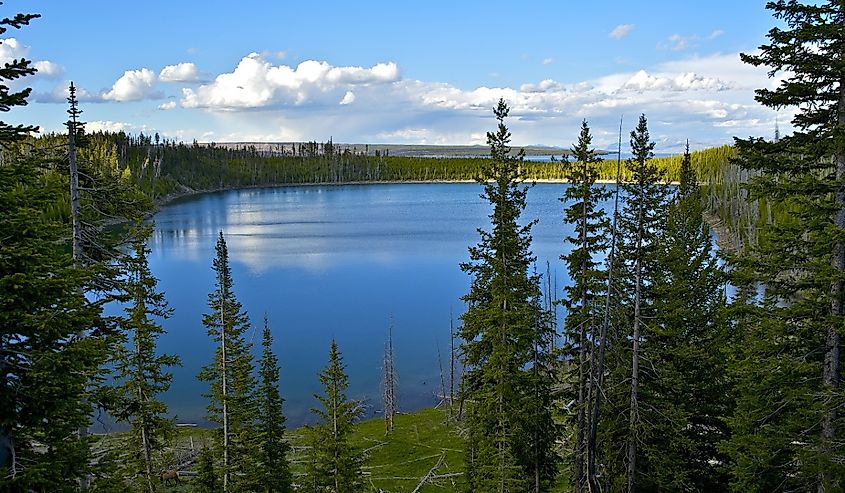
Arguably one of the most memorable and beautiful lakes in Wyoming, Yellowstone Lake is the heart and lifeblood of the infamous Yellowstone Park. This lake offers opportunities for visitors to kayak, paddleboard, or boat around the lake and experience viewing the park’s rich and diverse wildlife.
This lake's ecosystem includes majestic bison and elk, grizzly bears, herons, and swans. Since wolves were reintroduced in 1995, the possibility of seeing them has also increased. Snakes are also commonly found among the many animals in Yellowstone Lake.
While out on the lake, you should distance yourself from any Prairie Rattlesnake (Crotalus viridis) you come across. Described to have a rattle, diamond-shaped head, and blunt nose, this species of rattler is highly venomous. It often uses the lake as its hunting ground to catch small mammals, birds, and prairie dogs that make their way to the lake as a water source.
The Plains Garter snake (Thamnophis radix) is another very common species found around the lake. It is only mildly venomous and is considered non-toxic to humans. This species is well known for its unique yellow or orange stripe stretching from its head to its tail.
Visitors might also want to watch out for the non-venomous Rubber Boa (Charina bottae) snake. Aptly named the Rubber Boa, it is a constrictor snake known for its rubbery skin. It is often seen hunting along the lake for amphibians and other small mammals, so it is unlikely to try to bite you.
Fremont Lake
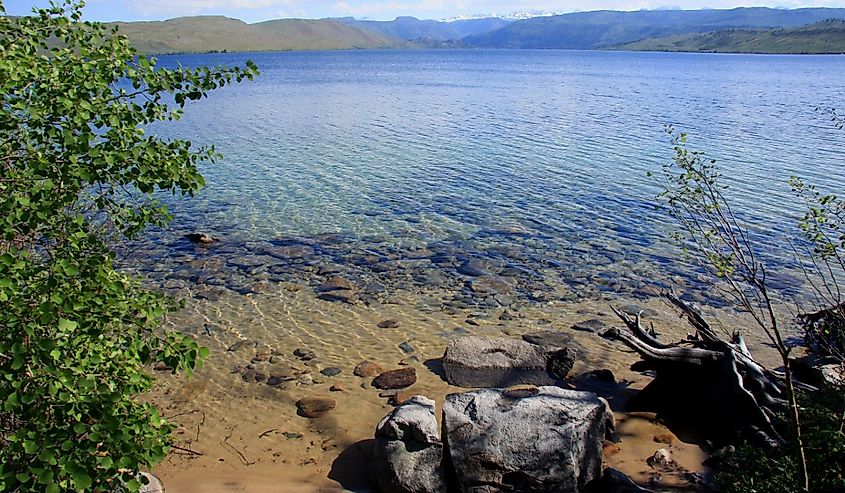
Fremont Lake, at 12 miles long, is the second-largest naturally formed lake in Wyoming. It features crystal-clear water and mountain views, making it ideal for those seeking the beauty of nature. Outdoor enthusiasts can do many activities around the lake; however, the most popular is a guided tour where visitors can explore hidden coves.
Fremont Lake is home to abundant deer, eagles, ducks, foxes, and beavers, which you can spot while exploring. You might also find yourself surrounded by common snake species, including the Common Garter Snake (Thamnophis sirtalis). This snake shares similar traits with the Wandering Garter Snake in terms of diet and appearance. It can grow up to 26 inches long and, although it can be testy at times, it is a non-venomous species.
When exploring around the lake, you might also come across a Western Hognose snake (Heterodon nasicus) with its distinctive upturned snout. These small snakes are more likely to play dead than try to bite, since they only feed on animals smaller than themselves, like frogs or tiny mammals.
Likewise, if you see a snake with a yellow ring around its neck, it is a Ring-Necked snake (Diadophis punctatus). This species is harmless unless you are a salamander or insect. Although primarily nocturnal, this snake species can sometimes be seen at dusk.
Jenny Lake
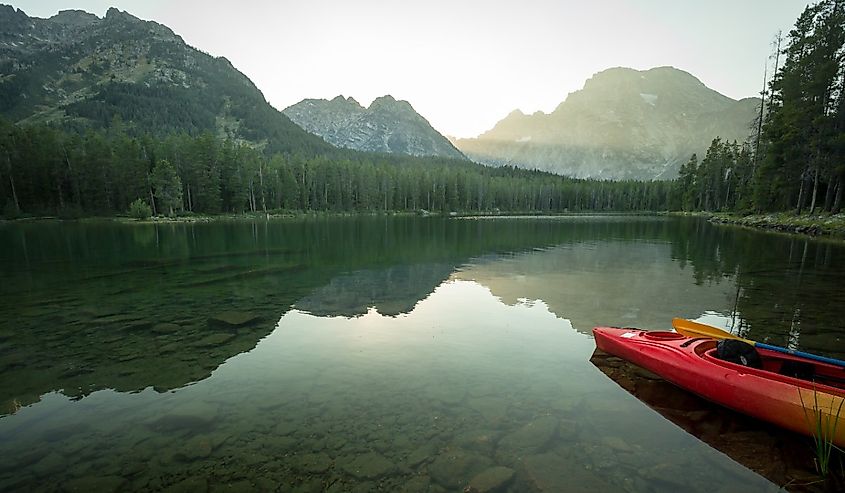
Jenny Lake features thrilling cliff jumping, picnic spots, kayaking, and more. Located in Grand Teton National Park, this lake offers clear waters, outdoor adventures, and abundant wildlife. Spanning 1,911 acres, Jenny Lake is surrounded by mountains.
You can expect to see beautiful songbirds, falcons, black bears, moose, and ravens along your journey. You're also likely to encounter some of the area's slithering residents, like the Smooth Green snake, the Northern Water snake, and the wandering Garter Snake.
The Smooth Green snake (Opheodrys vernalis) is an insect-eater with bright green scales. Jenny Lake's moist environment makes it an ideal hunting ground for this species, which is very small compared to other snake species found along the lake.
While on the lake, you might see the Northern Water Snake (Nerodia sipedon sipedon) swimming near your boat. These snakes are non-venomous and feed only on frogs and fish. However, they can become very aggressive if threatened and should be left alone if you come across one.
Found near nearly any body of water or damp environment, including this lake, is the Plains Garter snake (Thamnophis radix). This snake mainly feeds on amphibians and smaller mammals. This common species can grow to 15 to 28 inches long. Its bite is considered non-toxic to humans, although it is still listed as mildly venomous to animals.
Leigh Lake
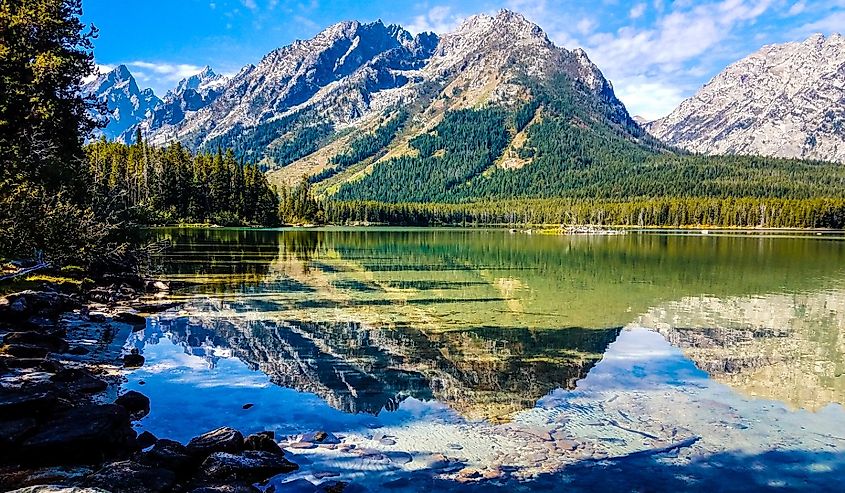
Crystal waters, surrounded by nature, towering mountains, and a diverse ecosystem, Leigh Lake has everything for exciting outdoor activities and stunning landscapes. The lake spans 1,792 acres and is renowned for its excellent hiking trails.
Near the lake, you might see bald eagles hunting, bison and moose grazing, and grizzly or black bears wandering the shoreline. When it comes to snakes, you should watch for the Wandering Garter snake (Thamnophis elegans), a subspecies of the common garter snake (Thamnophis). They often use the rocks around the lake to bask in the sun and the lake itself as a hunting area.
Another snake to watch out for is the Rubber Boa (Charina bottae). This snake is elusive and one of the most gentle species, so there's little to worry about since they are non-venomous.
Wyoming should be the top destination for travelers who love camping, boating, and immersing themselves in nature. It hosts multiple ecosystems and lakes with the most diverse range of mammals and reptiles, making it a dream spot for wildlife enthusiasts. Just watch out for the Prairie Rattlesnake (Crotalus viridis), one of only two venomous snake species in the state, so you can enjoy these lakes safely.











